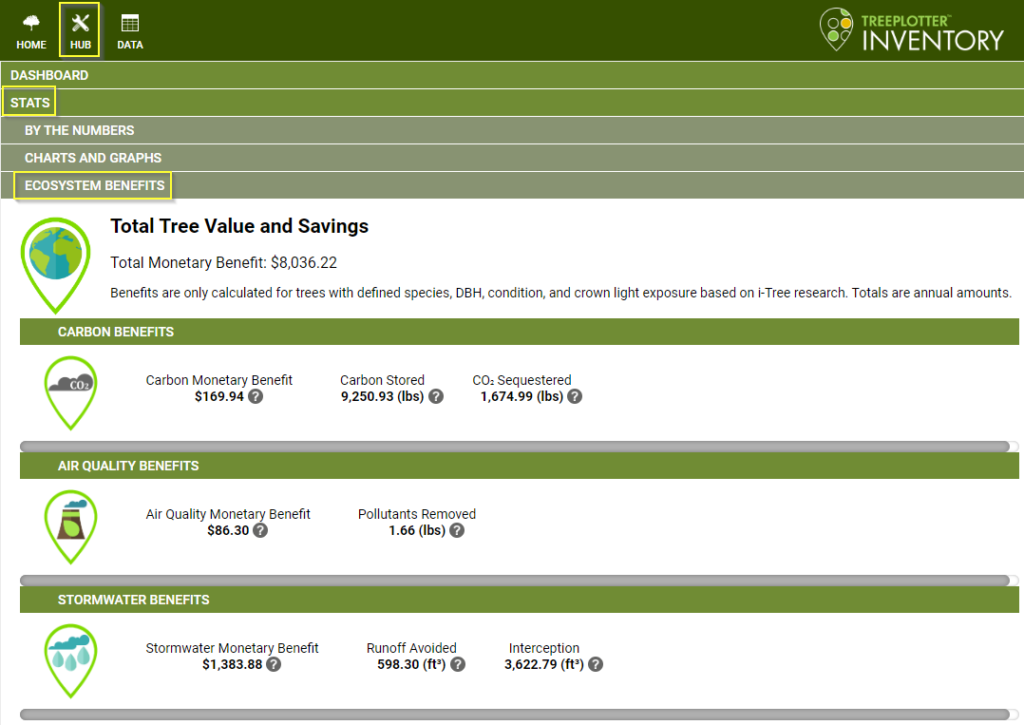TreePlotter™ INVENTORY can provide estimates of the ecological benefit that trees provide, broken up into several different categories. It is recommended that trees have at least the following information in order to generate the most meaningful results. That being said, these numbers are rough approximations and are best used to generate public interest and conversation as opposed to scientific studies. The fields that should be populated are:
- Latitude/Longitude (automatically populated when added in TreePlotter)
- Species
- Species codes need to be populated and match a value from i-Tree’s list of accepted species. Their species list can be found here
- DBH
- Condition
- Acceptable values:
- Excellent
- Good
- Fair (default if not populated)
- Poor
- Critical
- Dying
- Dead
- Acceptable values:
- Crown Light Exposure
- Acceptable values:
- Crown is fully shaded.
- One side of the crown is exposed to light.
- Two sides of the crown are exposed to light.
- Three sides of the crown are exposed to light. (default if not populated)
- Four sides of the crown are exposed to light.
- Crown is fully exposed to light.
- Acceptable values:
To view Ecosystem Benefits in TreePlotter INVENTORY, go to Hub at the top left of the window. Click Stats and then Ecosystem Benefits to see each different estimate as well as an overall monetary value. Additionally per-tree benefits can also be seen by clicking on a tree point and then clicking Eco Benefits. Ecosystem Benefits will update every hour if an attribute is changed on a tree or a new tree is added into your application.
Monetary values can be displayed as USD as well as in metric units and UK currency (GBP) – Contact support for a full list of currency options.

Ecosystem Benefits are broken up into 3 different categories:

Carbon Dioxide / Carbon Storage: A healthy tree canopy helps to reduce atmospheric carbon through carbon sequestration (pulling carbon dioxide from the air and storing in their roots, trunks, stems and leaves). Energy savings also contribute indirectly to a decrease in carbon dioxide by lessening the need for air conditioning and heating.
Definitions can be found below:
- Carbon Stored: All carbon dioxide stored in the urban forest over the life of the trees as a result of sequestration (in pounds). This measurement is not the same as annual carbon sequestered.
- Carbon Sequestered: The amount of carbon annually removed from the atmosphere and stored in the canopy’s biomass.

Air Quality: Trees help to absorb harmful pollutants, intercept particulate matter that can cause respiratory issues, and release oxygen into the air. These benefits are recorded as estimates of pollutants removed.
The following pollutants are included:
- Ozone (O3)
- Volatile Organic Compounds (VOC)
- Nitrogen Dioxide (NO2)
- Sulfur Dioxide (SO2)
- Particulate Matter

Stormwater: Through promoting healthy soil and intercepting rainfall, trees help to reduce the amount of stormwater created from a rainstorm. Results are shown both as volume of stormwater and an estimated monetary benefit.
